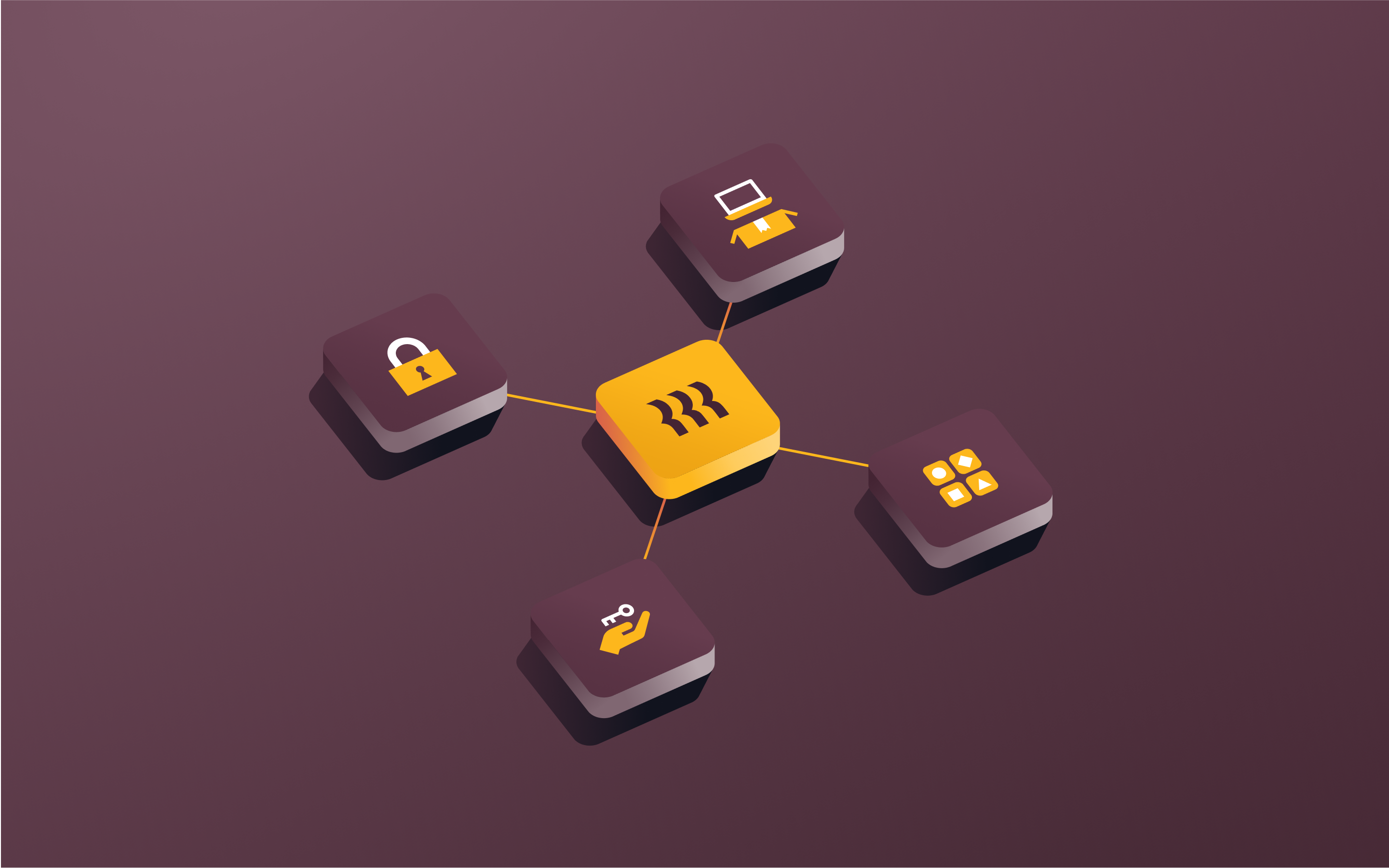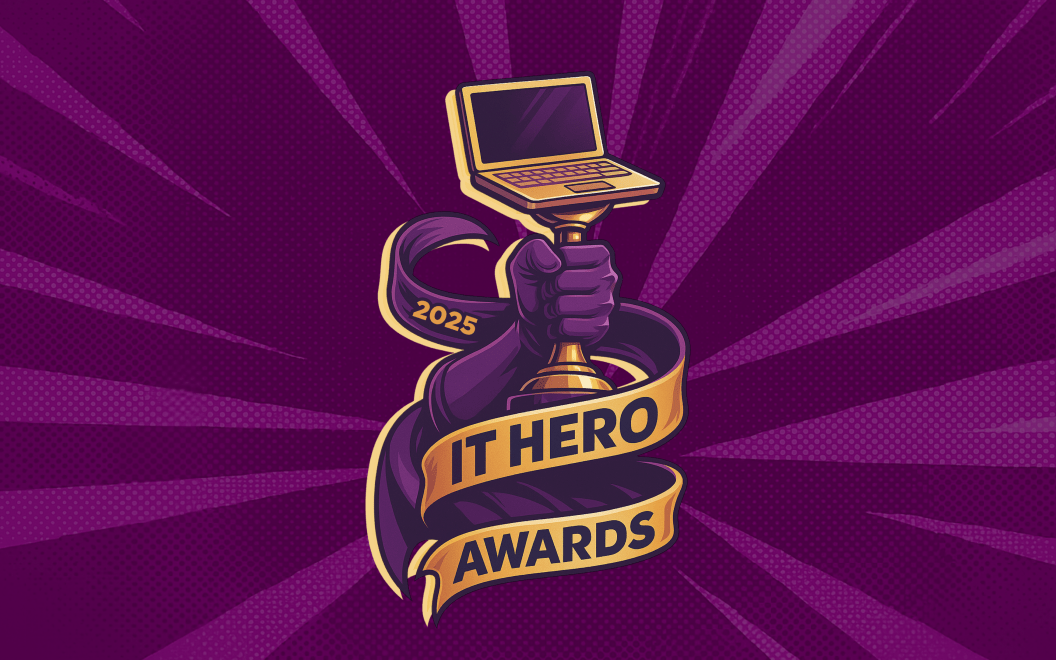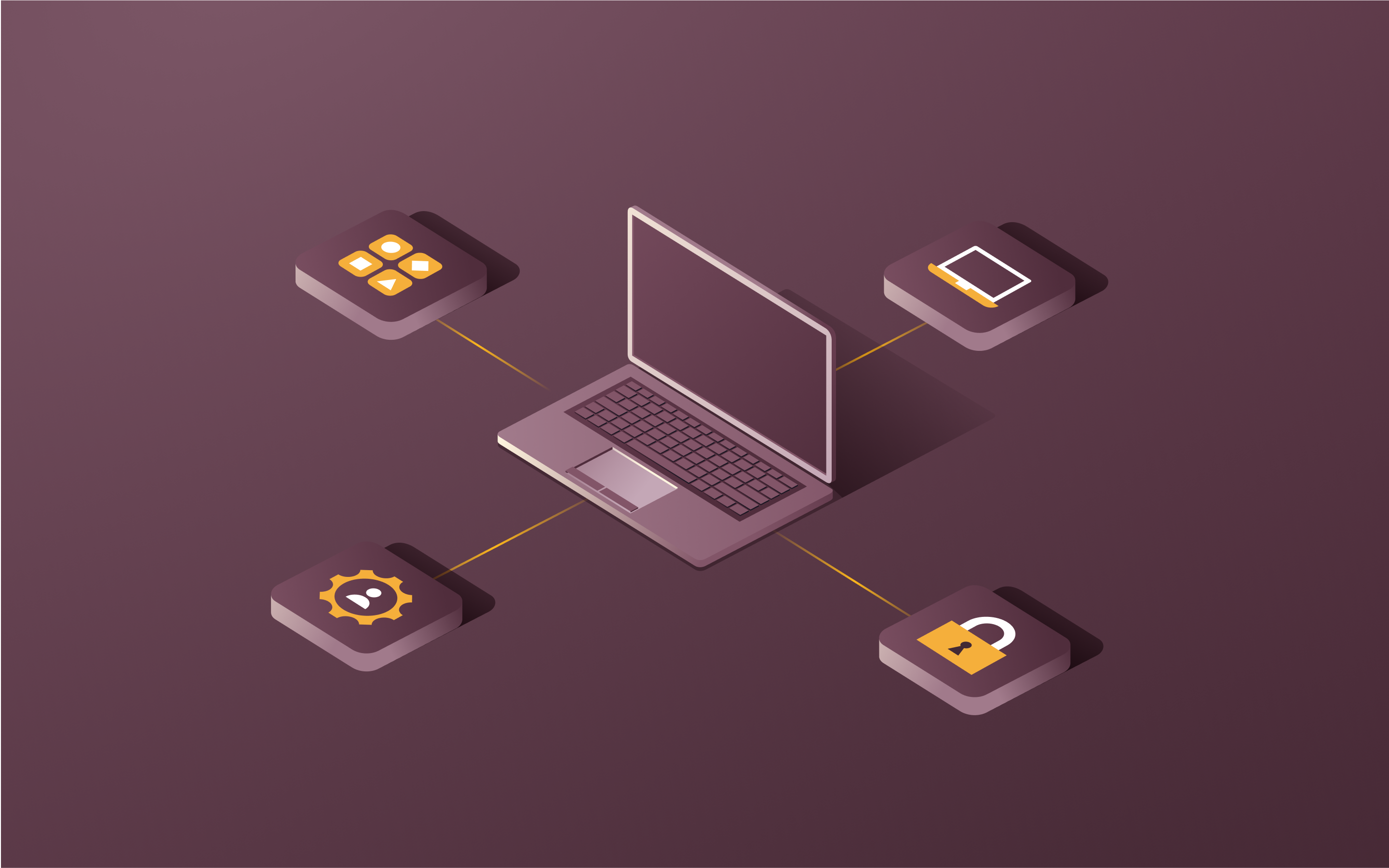10 best IT service management (ITSM) software tools in 2025

Your IT team is probably juggling too much. Help desk tickets pile up in email inboxes, someone’s tracking assets in a bloated spreadsheet that freezes every time they open it, and half the team spends their day playing phone tag to figure out who’s handling what.
This isn't sustainable, and it's definitely not helping anyone get work done. Thankfully, IT service management tools exist to fix exactly this problem. They give IT departments the structure and automation needed to handle requests efficiently, track resources properly, and actually have time for strategic work instead of constant firefighting.
The challenge is picking the right one. Get it right, and your team becomes more efficient overnight. Get it wrong, and you've just added another frustrating system to everyone's daily routine.
In this piece, we’ll explore the top ITSM platforms and help you figure out which one works for your organization.
What are IT service management (ITSM) tools?
ITSM tools organize the chaos that happens when IT departments try to handle everything manually.
So instead of tickets scattered across email, assets tracked in random spreadsheets, and change requests managed through hallway conversations, these platforms give you centralized systems for managing IT operations.
They handle different areas that consume most of your team's time, which include:
- Incident management: fixing things when they break
- Service request management: handling routine tasks like software installs
- Change management: controlling system updates to avoid disruption
- Problem management: identifying root causes behind recurring issues
- Asset management: keeping track of what you own and where it is
Most ITSM tools follow ITIL (information technology infrastructure library) frameworks, which are basically proven playbooks that other IT teams have developed through years of trial and error. Instead of inventing your own processes, you get tested approaches for handling common scenarios.
The difference between ITSM tools and other IT software is focus. Network monitoring tools watch the infrastructure.
Security software protects against threats. ITSM tools focus on delivering IT as a service to your organization, emphasizing user experience and business value rather than just maintaining systems.
Benefits of ITSM tools
Implementing effective ITSM software delivers measurable improvements across multiple areas of IT operations.
Streamlined service delivery
When every request follows a chaotic path, nothing moves efficiently. ITSM tools bring structure with consistent workflows. Tickets go to the right person automatically. Users get updates without reminders. Critical issues get prioritized instead of lost in the backlog. You get predictable delivery instead of guessing if a request takes two hours or two weeks.
Improved resource allocation
Better visibility into workloads and ticket patterns helps managers make smarter decisions. You can spot overloaded staff, time-wasting tasks, and bottlenecks. This leads to better team structure and smarter use of resources, so routine work can be automated or pushed to self-service while the team focuses on high-impact tasks.
Cost savings through automation
The biggest cost savings come from not having humans do things that software can handle. Password resets, software installation requests, basic troubleshooting—a lot of what floods IT departments can run automatically once you set it up properly. Plus, fewer mistakes happen when systems handle repetitive work, and your team can focus on problems that actually need human input. Most organizations find the time savings alone justify the software cost within a few months.
Enhanced visibility and control
Dashboards and reports give real-time insight into IT performance. Managers can track resolution times, SLAs, satisfaction scores, and productivity metrics. Historical data shows patterns that guide process improvements and capacity planning, helping teams fix recurring issues at the root instead of just treating symptoms.
Stronger governance and compliance
IT management solutions enforce proper procedures through defined workflows and approval processes. All activities are logged, creating audit trails that demonstrate compliance with internal policies and external regulations. Change management controls reduce the risk of disruptions, and asset tracking ensures inventories and licenses stay accurate.
Better user experience
Self-service portals let users submit requests, track progress, and solve common issues without going through IT. Knowledge bases provide instant answers, and clear communication keeps everyone informed. This lowers frustration, boosts productivity, and reduces the volume of manual requests IT needs to handle.
Key features and must-have capabilities of ITSM software
Effective ITSM platforms share several essential capabilities that enable efficient service delivery.
1. Incident management
Incident management covers everything from detecting disruptions to resolving them and reviewing what happened. A good system collects incidents from multiple sources like email, phone, chat, and automated monitoring tools, then routes them intelligently to the right team based on priority and skills. Escalation ensures urgent issues get fast attention while keeping users informed every step of the way.
2. Change management
Change management helps teams handle system updates carefully to avoid downtime. It supports structured workflows with risk assessments and approvals, integrating with development tools to give full visibility of changes. If something goes wrong, rollback options let teams reverse updates quickly, minimizing impact.
3. Asset management
Asset management tracks IT resources throughout their lifecycle, automatically discovering devices and software on the network. It maps relationships between components and keeps license usage compliant. Financial features assist with budgeting, while mobile access allows technicians to update asset information wherever they are.
4. Service request management
Service request management automates routine tasks such as provisioning access or installing software. Custom forms gather all necessary details, approval processes route requests efficiently, and fulfillment tracking keeps everything visible. Self-service lets users handle many requests themselves while the system automates backend work.
5. Self-service portal
Self-service portals connect to service catalogs that let users find answers and submit requests without contacting IT directly. It features robust search and knowledge bases that provide quick solutions and request tracking to keep users informed. Mobile-friendly design ensures support is accessible anywhere.
6. Integration capabilities
Modern ITSM platforms connect seamlessly with other business systems, including HR, finance, and monitoring tools. APIs enable data sharing and custom workflows, while single sign-on simplifies access. Synchronization keeps data consistent across platforms, supporting smooth, end-to-end processes.
7. Reporting and analytics
Reporting tools provide real-time insights into service performance, tracking key metrics like resolution times and customer satisfaction. Custom reports address specific needs, and trend analysis helps teams plan capacity and improve processes based on historical data.
The 10 best IT service management software tools
These platforms represent the leading ITSM solutions available in 2025, each offering distinct advantages for different organizational needs.
1. Rippling
Rippling approaches ITSM differently than traditional tools by connecting IT operations directly to your employee data. Instead of treating IT management as a separate function, Rippling uses information from HR and payroll systems to automatically handle device provisioning, access management, and software deployments.
When someone gets hired, promoted, or changes teams, Rippling automatically updates their IT access without manual tickets or permission changes. The platform also handles device management for Mac and Windows computers with remote deployment, security policies, and real-time monitoring.
2. Zluri
Zluri specializes in SaaS management and IT operations, providing visibility into software usage and spending across organizations. The platform addresses the growing challenge of SaaS sprawl by automatically discovering all applications in use and providing detailed usage analytics.
3. Zendesk
Zendesk brings its customer service expertise to IT service management, emphasizing user experience and ease of deployment. The platform includes ticketing, incident management, and self-service capabilities designed for quick implementation.
4. Freshworks
Freshservice combines traditional ITSM capabilities with modern AI-powered features through its Freddy AI platform. The solution includes incident management, change management, asset management, and service request handling in one interface.
5. Deel
Deel has expanded beyond global employment services to include IT management capabilities for distributed teams. The platform connects some IT functions with payroll and HR services for organizations managing remote employees.
6. Ivanti
Ivanti offers enterprise-focused ITSM capabilities with particular strength in security and compliance. The platform includes asset management, change management, and service management features designed for large organizations with complex requirements.
7. ServiceNow
ServiceNow operates as an enterprise service platform that consolidates IT services and tools into a single system. The Now Platform uses AI and machine learning to automate essential processes while providing generative AI experiences to accelerate productivity.
8. TopDesk
TopDesk provides straightforward ITSM capabilities with an emphasis on user-friendly interfaces and quick implementation. Core features include automated ticket workflows that categorize and prioritize incoming requests, knowledge management systems that keep information flowing between teams and end users, and built-in dashboards for tracking team performance.
9. SolarWinds
SolarWinds Service Desk builds on the company's infrastructure monitoring expertise to provide ITSM capabilities enhanced with monitoring data. The platform integrates service management with network and systems monitoring for additional incident resolution context.
10. Jira Service Management
Jira Service Management, developed by Atlassian, leverages the Jira platform to provide ITSM capabilities specifically designed for organizations that want integration between IT service management and software development workflows. The platform includes incident, problem, change, and service management features.
How to select the right ITSM tools for your business
Choosing an effective ITSM solution requires a systematic evaluation of your needs, options, and constraints.
Step 1. Assess your business needs
Start by evaluating your current IT service delivery challenges and processes. Document what works, identify pain points, and define what success looks like. Consider factors like team size, IT environment complexity, compliance, and growth plans. Gather input from IT staff and end users to capture all perspectives. Review your existing tools and integrations to decide what to keep, improve, or replace.
Step 2. Evaluate feature offerings
Compare potential solutions against your list of requirements. Focus on core ITSM functions such as incident, change, and service request management. Look for advanced features like automation, AI, mobile access, and analytics. Consider vendor roadmaps to ensure the tool can evolve with your needs as your organization grows.
Step 3. Consider user experience and support
Assess the user interface and ease of navigation for both IT staff and end users. The best features don’t matter if people struggle to use the system effectively. Also, evaluate vendor support options, including documentation, training, community forums, and direct help, as good support is key to successful implementation and ongoing use.
Step 4. Analyze cost versus value
Don't just look at the sticker price. Factor in implementation costs, training time, ongoing maintenance, and any integration work you'll need. Weigh these against benefits like faster ticket resolution, fewer manual tasks, and happier users. Most organizations find that efficiency gains quickly offset the software investment. So ensure you get realistic estimates for all costs, not just licensing fees.
Step 5. Try demos and pilots
Take advantage of vendor demos and trial periods to test platforms with real workflows. Use pilot projects with limited scope to identify any issues and confirm the solution fits your environment before committing fully.
4 ITSM best practices
These foundational practices will help you maximize the value of your ITSM implementation and ensure it delivers lasting benefits to your organization.
1. Align with business processes
Successful ITSM starts by designing processes that support your business goals rather than forcing the business to fit the software. Understand how IT services add value and structure your workflows accordingly. Regular reviews with stakeholders keep ITSM aligned with evolving business needs and capabilities, ensuring it drives success instead of creating extra overhead.
2. Regular training and updates
Invest in ongoing training for IT staff and end users that adapts as processes change and new features roll out. Cater to different learning styles by offering workshops, documentation, and videos. Regular refresher sessions help maintain best practices over time, which is essential for getting the most from your ITSM investment.
3. Continuous improvement
View ITSM as a continuous journey rather than a one-time project. Regularly review performance, gather user feedback, and spot areas for improvement. Use platform data to detect trends and bottlenecks, then apply changes incrementally, measuring their impact to ensure service delivery keeps getting better.
4. Engage stakeholders
ITSM success depends on support from across the organization, not just IT. Maintain regular communication with business leaders, users, and other departments to keep them engaged and uncover new improvement opportunities. Establish feedback channels so stakeholders can share concerns and ideas, ensuring ITSM stays relevant and valuable.
Take IT management to the next level with Rippling
Traditional ITSM tools focus primarily on ticketing and incident management, but Rippling takes a fundamentally different approach by integrating IT operations with HR and finance on a single platform. This integration removes the silos that complicate employee lifecycle management and unlocks automation opportunities.
Rippling offers a set of tightly connected IT features that streamline every part of device, access, and identity management:
- When someone joins your organization, Rippling IT automatically provisions accounts, assigns devices, installs software, and grants access based on role, department, and location data.
- Devices can be deployed with zero IT touch and kept secure with enforced policies, remote access, and full fleet visibility through Rippling device management software.
- Rippling identity management software updates SSO, MFA, and group permissions in real time, using real-time HR data to adjust access when employees change roles or leave.
- Rippling workflow automations coordinate transitions across IT, HR, and finance without manual follow-up or cross-team delays.
Rippling's unified approach transforms reactive IT support into proactive service delivery. By connecting employee data with IT operations, the platform enables sophisticated automation that responds to organizational changes without manual intervention.
FAQs about ITSM tools
What are the core functions of ITSM tools?
ITSM tools provide these essential functions: incident management for resolving service disruptions, service request management for handling routine tasks, change management for controlling system modifications, problem management for identifying root causes of recurring issues, and asset management for tracking IT resources. These functions work together to ensure reliable and efficient IT service delivery.
What is an example of an ITSM system?
ServiceNow is an example of an enterprise ITSM platform with incident, change, and service management capabilities. For organizations seeking integrated approaches, Rippling combines ITSM functionality with HR and device management, while Jira Service Management offers ITSM features integrated with software development workflows. Each solution addresses different organizational needs and priorities.
How can small businesses benefit from ITSM?
Small businesses gain significant value from ITSM tools through improved organization of IT requests, faster issue resolution, and better operational visibility. Basic ITSM capabilities like ticketing systems, knowledge bases, and workflow automation can dramatically improve efficiency and user satisfaction.
This blog is based on information available to Rippling as of June 27, 2025.
Disclaimer: Rippling and its affiliates do not provide tax, accounting, or legal advice. This material has been prepared for informational purposes only, and is not intended to provide or be relied on for tax, accounting, or legal advice. You should consult your own tax, accounting, and legal advisors before engaging in any related activities or transactions.






